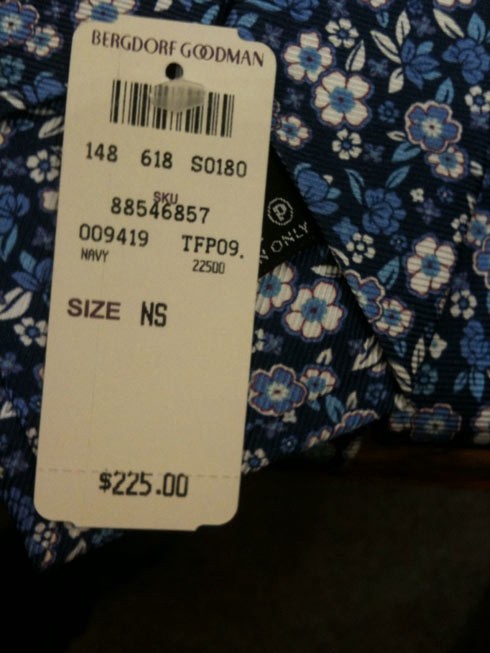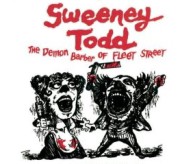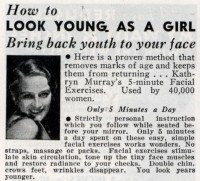Clark Hoyt's Reign of Error Ends in June

Much went awry in the handling of these two articles: a new freelancer was not properly vetted; e-mail in which she disclosed her personal relationship was overlooked; an editor wanted to accommodate a respected staff member even though she knew his essay was flawed. — New York Times public editor Clark Hoyt.
Tom: Whahuh, Clark Hoyt?
Tom: I don’t….
Tom: Ha, wow.
Choire: Shall we turn first to the sad, sad story of the Times copy editor who wrote a Complaint Box column about Jet Blue, an airline that he’d sued after missing a flight because he couldn’t find the gate?
Tom: Thirty minutes?
Tom: Dude showed up 30 minutes before a flight?
Tom: It’s not about fairness to JetBlue.
Tom: it’s about not letting the writer embarrass himself.
Tom: But also it is INSANE to compare that story to Hoyt’s other example: a woman pimping her boyfriend’s restaurant.
Tom: And then he gets to the recurring Times junket problem.
Tom: He concludes: “The Times is right to stick by the rules.”
Tom: Have you read the rules?
Choire: I have read the rules!
Tom: “137. Before being given an assignment, freelance contributors must sign a contract with the Times Company or one of its units. Such a contract obliges them to take care to avoid conflicts of interests or the appearance of conflict. Specifically, in connection with their work for us, freelancers will not accept free transportation, free lodging, gifts, junkets, commissions or assignments from current or potential news sources. Independent broadcast producers, similarly, must comply with our ethical standards during their preparation of any news production that will bear the name of the Times Company or one of its units.”
Tom: Taking it from the top: “Before being given an assignment, freelance contributors must….”
Tom: How does that happen? The freelancers sign the Times contract before the Times gives them an assignment?
Tom: Should everybody just sign on in advance, before they pitch the Times?
Choire: Sure!
Choire: WE ALL MUST OBEY BEFORE WE KNOW WHAT WE ARE DOING.
Tom: I believe what they mean to say is “Editors for the Times must obtain a signed story contract from a freelancer before any reporting or writing that may appear in the Times can be done.”
Choire: Most likely.
Tom: “Well, the pitch idea sounds intriguing, but are you sure there’s enough there for a piece?”
Tom: “Not yet.”
Tom: “OK, let me send you a contract, then you fill it out and e-mail it back to us, and once that’s all set, please do some more reporting and see if it’s a story.”
Choire: Heh.
Tom: As a freelancer, I sort of like it! Taken to its logical conclusion, the Times should be paying people to write pitches.
Choire: As if.
Choire: Yes.
Choire: Well.
Choire: Also?
Choire: Did you notice Hoyt mentioned that this particular freelancer sent FIVE PAGES of story ideas to this editor?
Tom: That’s pretty great.
Tom: Then comes this: “in connection with their work for us, freelancers will not accept…”
Tom: So why does her previous junket automatically disqualify her in Hoyt’s eyes?
Tom: “The paper has strict rules that freelance travel writers cannot have accepted free trips, rooms or meals.”
Tom: That’s how he puts it, but it’s certainly not what that provision says. Now, the next provision says this:
Tom: “138. Assigning editors and producers who deal with nonstaff contributors should be aware that a freelancer’s previous involvements and professional behavior can prove an embarrassment. They should make every effort to insure that a freelancer has no history or ties that would raise a real or apparent conflict of interest on a particular assignment.”
Tom: But I don’t see how that vague language comes out to a retroactive application of the no-junkets-on-Times-assignments rule to every assignment a freelancer took before taking a Times assignment.
Choire: The Travel section does have different rules: “No staff member of our company who prepares a travel article or broadcast — whether on assignment or freelance, and whether for us or for others — may accept free or discounted services or preferential treatment from any element of the travel industry.”
Tom: But that doesn’t apply to non-staff freelancers.
Choire: Right.
Tom: Just to moonlighters from the rest of the paper.
Choire: Correct.
Tom: I’m just reading the rules that Clark Hoyt linked to, within the sentence where he said that this writer was de facto ineligible to write for the Times.
Tom: And I see nothing in those rules that says freelancers “cannot have accepted” junkets, past tense, which is how Hoyt puts it.
Choire: Righty.
Tom: So let’s recap.
Choire: Go for it.
Tom: First of all, Hoyt is equating a staffer who wrote a piece about a personal complaint, clearly identified as such, with a writer who recommended her boyfriend’s restaurant in a piece with no disclosure in it.
Tom: Now, the complaint piece was dumb, but it was not the least bit unethical on the writer’s side.
Tom: It was unconvincing and it should have been spiked by the editor once it emerged that the guy had inflicted the troubles on himself. And the Times’ way of mixing staff contributions with public contributions in that space could be a problem for people who worry about the paper throwing its weight around-but those ethical judgments or misjudgments were made by editors.
Tom: From the writer’s point of view, all his cards were on the table for the reader to see.
Choire: Yes.
Tom: In the end, I came away from the piece feeling sorry for JetBlue for having had to deal with such a mad-tempered pest of a passenger.
Tom: But again, that is an editor’s failure.
Tom: But Hoyt is more or less calling the guy a crook.
Choire: Allow me to blather on for a bit!
Tom: Yes?
Choire: May we return to Clark Hoyt’s November 1 column?
Choire: Then, he wrote: “Now, with an around-the-clock news cycle, reporters file throughout the day, and copy can be edited over a smoother cycle, she said. That is the goal, but the editing staff is dealing with much more copy than before, some online articles are now read by a single editor instead of four or five, and I hear regularly from readers complaining about errors in grammar, spelling and word usage.”
Choire: That Hoyt reduces the serious changes in workload and workflow that have been going on at the paper over the last three years to complaints about grammar is absurd, if not wrong. What he addresses in this column today, though he doesn’t mention it, are the real effects of what he wrote about on Nov 1.
Tom: Yes. This freelancer shouldn’t have written about her boyfriend’s restaurant, but she did tell them about it. She just mistook their inability to pay attention for permission to go ahead.
Choire: So, as you say, these instances of editors being too busy, or overworked, or ding-batty, or whatever they were, to pay attention to minor bad-goings-on, and therefore making some dumb mistakes are, at best, just a symptom of what’s going on at the Times (which is what’s going on everywhere else). This is a newspaper that, as we all know, is losing 100 staffers more right now. That means: more unread emails by editors in the case of the bad-choosing-girlfriend-freelancer, or more bad shoe-horned-in columns by a coworker who can’t bother to get to the airport more than 30 minutes before his flight and then actually gets lawyery over it. That Hoyt is unable to make these connections, and that is his job, I think, is terrible.
Choire: And that it’s THEN compounded with an untrue statement of the Times’ own policies?
Choire: That’s just derelict.
Choire: *Gets off soapbox*
Tom: Don’t get off your soapbox yet!
Choire: I was just making room for you up here!
Tom: I’m trying to figure out how the Public Editor’s weird and confusingly vague sideswipe into the forced-miscarriage story serves the readers of his column.
Tom: It was bound up in the initial discovery of the conflict of interest, sure.
Choire: Well, he has a strange obsession with how things are found out.
Choire: Here’s how Clark Hoyt finds things out: he gets letters.
Choire: Meanwhile, NPR gave credit, without necessarily knowing from inside the Times that such credit was deserved, to NYTPicker for bringing up the issue of the Miami freelancer.
Tom: While Hoyt gives no credit to NYTPicker.
Choire: (Which, to NYTPicker’s credit, they brought up on November 23.)
Choire: (And the Times editors note was published on Dec 6.)
Choire: Anyway!
Choire: But Hoyt got a letter from a reader in “Miami.”
Tom: Hoyt’s job here, this late in everything, is to be a quasi-judicial arbiter of the ethics questions.
Choire: Yes.
Tom: And the forcible-miscarriage thing reads as an attempt to disparage the character of the writer by association.
Tom: She didn’t just write about her boyfriend, she wrote about her boyfriend the sensational criminal, because she clearly enjoys trafficking in wrong behavior.
Tom: When the sleazy behavior that matters here is the Times’ ongoing notion that everyone who writes for it must abide by a monastic code of ethics, even as a greater and greater share of the paper is written by people who do not get to share in the institutional and financial strength on which that code of ethics is based.
Tom: You want ethically impeccable writers? Then don’t expect them to have to hustle for a living.
Tom: Don’t blame them for getting bought, let alone for the potential appearance of having previously been bought, when you’re too cheap to buy them yourself.
Choire: Yes, this poor girl should know better than to date some terrible owner of a burger joint. Also she should know better than to write about him. Stuff happens. Her side of the story? “I told my boss up front!”
Choire: She may not be the sharpest whatever in the whatever? But these things happen, and her defense is reasonable.
Choire: As is her editor’s! Whose defense is: I don’t have time to read all these fucking emails.
Tom: There’s more to it than that, even.
Tom: Here’s a piece of reporting the Public Editor could maybe have tried to do: who on the ground in Miami could have done the job without ethical complications?
Tom: They won’t pay to send a staff reporter to Miami.
Tom: They want somebody who already lives there and is intimately familiar with the dining scene.
Tom: And they end up with a person who is….intimately familiar.
Choire: Also, there is the issue of Miami.
Tom: Sure.
Choire: For instance, you can have Brett Sokol write about art collectors, as he recently did, from Miami, for the Travel section.
Choire: (DISCLOSURE: YEARS AGO I ONCE HIRED BRETT SOKOL AS A MIAMI-BASED FREELANCER AND I LIKE HIM THOUGH I DO NOT KNOW HIM.)
Choire: And that is well and fine. But you also have to know that he is the arts editor of Ocean Drive magazine.
Choire: Ocean Drive is owned by Niche Media, which owns Gotham, etc. And is what I consider one of the filthiest media outlets in terms of relationships between editorial, social status and the advertising department.
Choire: Does this mean Brett shouldn’t write for the Times? No!
Choire: Does it mean it would take a team of editors about three weeks to thoroughly investigate, I guess, every party he’s ever attended, every airplane he’s been on, and every collector’s house at which he’s consumed a canape? Sure!
Choire: These towns, and these beats, are small.
Choire: You cannot go to a party in the art world in Miami without running into Rosa de la Cruz.
Choire: Of course, he hasn’t slept with the de la Cruz’s, THAT I KNOW OF, nor did he break up with them due to dubious tabloid incidents.
Tom: But if you won’t send an outsider, you get an insider.
[This is a good place to note, since we dragged Brett in without his consent or knowledge, that he is a CLEAN TEEN, who does not go on junkets, and never accepts comped services of any kind. We used him rather cavalierly as an example of a Miami freelancer-which was not to besmirch him in any way!]
Choire: Also: how would you FIND an outsider to write for you?
Choire: On… TUMBLR?
Tom: Probably yes, actually. But that would be work.
Tom: And they don’t have time to do work.
Tom: But it’s the sanctimony that gets me.
Tom: Here is what the Times has been doing: it has been adding coverage of lifestyle and travel — the areas where conflicts of interest are easiest to come by — and it has been cutting staff.
Tom: Both in response to economic imperatives.
Tom: We are in tough Times.
Tom: But stop pretending.
Tom: The Times has lowered its standards.
Tom: Lower standards are cheaper than high standards.
Tom: The Times has sacrificed integrity to save money.
Tom: So have lots of publications.
Choire: And also, and not to sound so terribly reactionary, but this is just another instance in which, if I were an editor at the Times, I’d be screaming “DAMN YOU CLARK HOYT” at my walls for the next 24 hours.
Choire: It’s not that the ombudsman should be on the “side” of employees of the Times.
Choire: But that he should understand what’s happening inside the paper. And this shows, in at least two ways, that he does not.
Choire: AND ANYWAY, PS: WEN HO LEE, THE END.
Previously: Wordplay Most Fouled: How Not To Write A Headline
Something Horrible Happened to Tom Ford!

Tom Ford, whose movie A Single Man made $216,328 this weekend in its very limited release, makes, as we have noted, excruciatingly expensive and gorgeous clothes for men. (Women’s clothes coming soon-as soon as he raises $50 million to do the line, which, oh my God, it’s going to be all made out of ostrich saliva and platinum leaf, I guess?) In particular, in his recent seasons of ties, not a single one of them was bad. But, while my back was turned, apparently Tom Ford just dumped a bunch of men’s stuff for next season on the market? And it is REVOLTING.
This is what some of the ties for fall/winter looked like. They were good! They were beefy and heavy and manly and suave. Very sexy.

AND THIS IS WHAT CAME IN! Flowers, for one thing! Ugly flowers!

And? PAISLEY! Gagly paisley.

I understand that he is a chronic envelope-pusher. That this is a perversity. That he is teasing all of us, because that is what the naked guy’s butt on the front page of his website is about, and that is what the velvet smoking jackets are about. But this envelope has been pushed into THE MUD and now it is all filthy and ruined.
This is how much they cost, by the way.

I’m actually upset about this because Tom Ford ties have been the ultimate in semi-post-ironic high taste. They were incredible.
These, on the other hand, are sad trash.
Karen Hughes and Mark Penn Claim They're Out of the "Just Making Stuff Up" Business

An exciting and phenomenally unintelligible press release went out this morning from Burson-Marsteller, the challenged PR and lobbying outfit that represented Blackwater, Colombia, Argentina and Union Carbide, as well as other extremely-challenged institutions. They are announcing that they have a new “methodology” which is “evidence-based”! I have no idea what this means. Your translations of this heaping pile of crazy are very welcome.
NEW YORK — (Business Wire) — Burson-Marsteller, a leading global public
relations and communications consultancy, announced today it has
adopted a new, data-focused approach to communications called
“Evidenced-Based Communications.” During 2009, Burson-Marsteller
internally rolled out a new firm-wide methodology for developing,
monitoring and measuring communications programs. The approach was
developed by the firm’s most experienced client leaders around the
globe. “The media and communications landscape is changing and so have
the needs of our clients.” said Burson-Marsteller CEO Mark Penn. “In a
world of citizen journalism, social media and instant information
about events happening around the globe, we are investing in a more
diligent and scientific approach to developing and delivering key
messages.” The Evidence-Based approach rests on Burson-Marsteller`s
tradition of thought leadership and research-driven programs. The firm
also plans to work closely on developing Evidence-Based programs with
its sister research firm Penn Schoen Berland, which was co-founded by
Mr. Penn. The Evidence-Based approach is designed to ensure that all
client programs are rooted in data. The approach also monitors
progress throughout the program to make certain that clients achieve
their original objectives. Results are measured to confirm the return
on investment (ROI). The firm launched Evidence-Based Communications
internally with training, seminars and workshops designed to help
staff integrate the approach into their client engagements and new
business proposals. As part of the effort, each Burson-Marsteller
practice will continuously develop Evidence-Based Tools to better
drive strategy and messages with data and measure the final ROI for
clients. The key benefits of Burson-Marsteller`s commitment to the
Evidence-Based approach are:
* Evidence-Based Communications ends the guess work. All
communications strategies are based in evidence, not speculation. * It
delivers better ROI. By using Evidence-Based Communications to develop
programs, the firm is ensuring that each client`s communications
dollars are spent on tactics and messages that will deliver results. *
It is measurable. By using Evidence-Based tools for benchmarking at
the beginning of a program and measuring effectiveness at the end,
clients can demonstrate a positive communications ROI. * The programs
are nimble. Because Burson-Marsteller measures the impact of a
program`s tactics at the beginning, middle and end of program, there
is an opportunity to modify tactics in the middle of a campaign. * It
is a holistic approach to communications. The Evidence-Based approach
is a complete methodology. The approach ensures a thorough use of data
and tools designed specifically to insert science into the process
where appropriate. * It provides proof of PR value to the
organization`s C-Suite. By using an Evidence-Based approach,
communications professionals can demonstrate the value that PR brings
to their organization at large.
Boxed In, with Kia Matthews: Is Taylor Lautner Making Us All Pedophiles?
by Kia Matthews

Wait, the vaguely Asian-looking werewolf kid from that gay vampire movie is hosting Saturday Night Live?, asked the small percentage of America watching TV on Saturday night. As ridiculous as the Twilight phenomenon is, it’s no secret that teenage consumers and their Orange Julius and baby-sitting paychecks are fueling the entertainment industry these days. And yet, Twilight’s two main stars are about the world’s least-accessible actors. Robert Pattinson and Kristen Stewart could give a fuck about anything besides skinny jeans, vintage band t-shirts and looking so over it. Both are highly uninteresting and seem to be teetering on the edge of a fame-induced nervous breakdown. So as “obscure” as 17 year-old Taylor Lautner may seem, it was pretty smart of NBC to get in on some of that Twilight action with him, rather than his future overdose victim coworkers.
Unlike Pattinson and Stewart, Taylor is quite charming (and highly bangable). Totally one of those kids who were blessed with crazily straight and white teeth, that did all the local mall modeling gigs and took acting lessons and lived for giving speeches in class.
Despite this, I was nervous to watch him on the show-his charm can very easily slip into the corny territory and a bad performance would poorly reflect on me as an enthusiast, right? Luckily it was the writing, as usual, that mostly sucked, not Tay-tay. And I have to give it up for a 17-year-old dude who’s willing to rock a denim skirt and purple leggings on national TV.
The thing I really love about this kid (aside from the obvious) is that he seems aware of the role he’s playing in pop culture and he’s handling it quite well. I’m sure it can be a bit overwhelming for him at 17, but don’t they say Hollywood 17 is like regular-people 25? He knows he’s a sex symbol. He’s switched on the hormone turbine in teen girls (and boys) across the globe and has driven many 20 (and 30) somethings to an uncomfortable place-the Pedo Zone.
Even before all this Twilight nonsense, I’d always thought he was a cute kid with that wolfy, piggy face of his. But when baby boy started mainlining Creatine shakes and getting jacked for his role in New Moon, it went from “awww” to “awww yeah.”
But how could I sleep at night knowing that I was writing blog posts about eating food off the belly of a 17-year-old? A minor! I would be vilified by the Internet Feminist Gestapo if I were a 27 year-old man writing about “taking the train to bone city” with Miley Cry-us.
Remember the Olsen Twins? Back in 2003, Rolling Stone put them on the cover, calling the underage duo “America’s favorite fantasy,” due in part to the infamous Olsen Twins Countdown Clock, which counted down the days until they were legally lust-after-able.
On Dec 10, Rolling Stone gave Taylor got the same cover treatment-except they put him in a see-through wet t-shirt.
I suppose in theory I may have been once or twice conflicted by sexualizing a minor, but really, it’s not my fault. It’s not me who’s marketing the kid as an ever-shirtless hunk who just wants to be there for me and love me and maybe give me tips on how to strengthen my core. I’m just consuming the product that Summit Entertainment is trying to sell me.
Whether or not Tay-tay knows it, that body of his-and the women and girls perving out over it-are a part of an important conversation. Excuse the grad school jargon, but I’m all about reversing the Male Gaze. The only real way to combat the never-ending sexualization and objectification of young women is to reflect the Male Gaze and do it in a way that is both consistent and conspicuous in order to shift the balance of power and create a uniquely female Gaze, ultimately SUBVERTING THE PATRIARCHYâ„¢.
The soapbox has been dismounted. I can attempt to justify this with all the feminist blah blah blahing in the world, but ultimately it comes down to one thing:

Whether or not it’s ideal, leveling the playing field at least feels fair. I will do my part in the struggle by continuing to appreciate the fuck out of those abs. Besides, 17 is legal in D.C.
Kia Matthews feels a little weird about her thing for Taylor but not so weird that she’s giving it up.
Kids Today
Hot with the kids now: Pot, pain pills, and ADD drugs. Not so hot: Cigarettes, meth, and binge drinking. It breaks my heart to see this new generation turn its back on the classics. Why, when I was their age we used to binge drink uphill both ways etc.
Read Elsewhere

Two good ones for all you theater people out there: New York talks to Stephen Sondheim and Angela Lansbury about their collaborations over the years, while the New Yorker chats up Christopher Plummer, who says this about living in a hotel: “It’s nice to have the bed done for you. That signals another day. The horror that happened yesterday is all over and forgotten. Clean sheets. You start life all over again.” I can’t wait until I’m old enough to say something like that with a sense of authority.
The (Partial) Vindication of Matt Taibbi

When Rolling Stone reporter Matt Taibbi fingered Goldman Sachs as the main culprit behind the housing bubble-and most of the other commodities bubbles of the past seventy-odd years-financial journalists closed ranks to denounce every element of the case he sought to make. The story was “just plain wrong,” thundered Slate’s Heidi Moore. Taibbi was “the Sarah Palin of journalism,” sniffed Megan McArdle, without showing any serious flaws in the piece’s analysis or reasoning. CNBC contributor and Daily Beast columnist Charles Gasparino sputtered that the whole spectacle of the foul-mouthed, pugnacious Taibbi presuming to explain the Goldman-spurred ’08 meltdown was “making me ill.” This wasn’t merely “wrong”-the financial press has spent the better part of the last decade being wrong, after all-it was, rather, that thing that no aspiring inside chronicler of Wall Street can ever afford to be: “pretty naïve.”
There were, to be sure, problems with Taibbi’s piece, among them some fast-and-loose interpretations of how collateralized debt obligations and credit default swaps actually work. But the collective brio of the financial press’s attempted beatdown of Taibbi was so out of proportion to his alleged offenses, it was hard not to see a lot of status anxiety-and more than a little Stockholm Syndrome-at play. Moore summed up this sensibility in the classic, self-regarding voice of a concern troll, simultaneously citing her own expert authority and the tender outlook of the ever-impressionable public: “As someone who’s written about Wall Street for a decade, it annoys me to see the public that wasn’t fully educated about the financial crisis before it happened get snookered again by misleading reporting afterward.”
Never mind, of course, that the people who have “written about Wall Street for a decade” might be more properly viewed as the instigators, rather than the sworn foes, of widespread public miseducation in financial matters, given the everybody-into-the-pool ethos of most writers covering the investment community.
Just consider what, for many of Taibbi’s detractors, was the clinching demonstration of the man’s fecklessness: Goldman couldn’t be a prime mover in the meltdown, since so many banks were planting their snouts in the mortgage trough, and emerging with lavish (if gossamer) rewards. Moore again sums the consensus up nicely, denying that Goldman-famously Washington’s best-connected investment house-was the real target of the government’s massive bailout of AIG because it was exposed to the tune of $12.9 billion in notes that AIG owed on Goldman-backed credit-default swaps. “When AIG collapsed-in fact because AIG collapsed-it owed money to several banks, and when the government took over AIG, it owed money to the banks, too.” Translation: Nothing to see here people; move along.
So it probably made Gasparino, Moore et al. ill in an entirely different way to see the headline in a Wall Street Journal analysis piece last Friday: “Goldman Fueled AIG Gambles.”
For one thing, Journal reporters Serena Ng and Carrick Mollenkamp found that Goldman’s exposure to botched AIG trades was much greater than initially reported; the bailout rescued “a total of $22 billion in assets” belonging to Goldman, about one-and-three-quarters the $12.9 reported at the time of the AIG rescue.
So much, then, for Moore’s point that Goldman wasn’t appreciably more exposed than other banks trading with AIG, since “Merrill Lynch received $12 billion, as did France’s Société Générale and Germany’s Deutsche Bank” after the $80 billion insurers’ bailout.
[Note: The above statement of Moore’s actually refers to the government bailout money received by Goldman Sachs, not their total exposure to AIG, as we originally indicated.]
Goldman’s overall portfolio with AIG ran to $33 billion-inconveniently enough, “roughly twice as much as Société Générale and Merrill Lynch the banks with the biggest exposure to AIG after Goldman.” And funnily enough, Ng and Mollenkamp, go on to explain, the AIG-Goldman nexus functioned pretty much as Taibbi said it did-as a patty-cake Ponzi scheme of concealed risk.
When a bank like Merrill created a collateralized debt obligation-ie., one of the super-mystical “tranches” of bum home loans packaged so as to allegedly disperse risk in the mortgage market-the banks roped into these deals “wanted protection in case the housing market tanked,” the reporters note. “Many turned to Goldman, which effectively insured the securities against losses. Then, to cover its own potential losses, Goldman bought protection from AIG, in the form of credit default swaps.”
What’s more, Ng and Mollenkamp explain, “Goldman charged more for the protection, so it was able to pocket the difference, making millions while moving the default risk to AIG, according to people familiar with the trades.”
In other words, Goldman was charging a fee for a nonproduct that offered pretty much the opposite of what it professed to be-protection from bad mortgage deals-and shifted the real exposure down river to AIG. No wonder when AIG officials-no mean hands at pitching their own brand of phony risk protection, of course-questioned the way Goldman was pricing these, um, exotic instruments in an early 2008 audit meeting, Goldman was “was unwilling or unable to provide any sources for their determination of market prices,” as a memo of the gathering drily noted.
All the scheme needed was Marvin Hamlisch performing some Scott Joplin theme music.
And when Goldman wasn’t performing its beguiling water ballet with AIG, it was also leaving an enormous footprint as an originator of CDO’s, Ng and Mollenkamp write-a business that sent yet more business AIG’s way in the form of Goldman-backed insurance of these third-party bank transactions. This was another role that, as our Journal correspondents note, “few competitors appreciated at the time.”
So much then, for McArdle waving away Taibbi’s characterization of Goldman’s wayward handling of CDO’s with the overcivilized retort that, my goodness, “the idea was pure portfolio theory, broadly agreed by everyone involved”-unless, of course, “everyone” in this usage is meant to be read as “everyone at Goldman.”
Now, none of this is meant to serve as a full-scale vindication of Taibbi-who, I should disclose, I recently edited in the forthcoming return issue of The Baffler. (Really!) Nor is to revisit the whole question of Goldman’s role as government-backed risk profiteer in any real detail (if you’re in the mood for that reading experience, though, hie over to Bethany McLean’s excellent breakdown in this month’s Vanity Fair).
It is merely to ask, if your initial view of an outside-the-caste chronicler of Wall Street’s financial abuses is simply to vent reflexive indignation verging on nausea, well, then isn’t it about high fucking time you started healing yourself?
Previously: Moneyster. Moneybook. MoneySpace?
Chris Lehmann has some sophisticated financial instruments he’d like to interest you in.
If You Look Young You Will Live Longer

Good news for those of you who are still getting carded: “People who look young for their age enjoy a longer life than those who look older than their years, according to a study of twins.” The study focused on “perceived age,” and over a seven-year period, researchers found that the twins who were thought to look older than their siblings were more likely to die first. I have been subject to terrible stress acne over the last year or so, which I’m going to assume makes me look like a teenager and is further proof that I will never die.
Goldman Sachs Issues a Strong Buy on The Cheesecake Factory!

Yesterday, Goldman Sachs sent out their market research advisory on the restaurant industry in the Americas, with “five themes that will dictate restaurant stock performance in 2010.” The outlook? SUNNY! There will be a “high end resurgence”! Also, an extremely high chance of people desiring cheesecakes!
We did not know that The Cheesecake Factory, which will kill you, as Ezra Klein points out, was the high-end pioneer in the marketplace of foods! Compared to Wendy’s, I guess it is.
But here it is, as Goldman’s #1 notion for ‘10:
High end resurgence — affluent guests driving sales outperformance at the higher end. CAKE (CL-Buy) is best positioned to benefit from this trend.
Oh and there is something in there about “sustained high unemployment” weighing everything down but SHH, I’M EATING CHEESECAKE.
Incidentally, Goldman discloses in the report that it owns more than 1% of common equity of THE CHEESECAKE FACTORY-and more than 5% of Burger King Holdings, Inc.??? Who knew. Also they noted that they do the investment banking for Tim Hortons? The world is really weird.
It's Been 30 Years Since The Release Of The Only Album That Matters
The Clash’s London Calling came out thirty years ago today. It still stands as punk rock’s crowning achievement. In fact, it’s probably as responsible as any other work for the fact that the term “punk rock” seems kind of silly now. The Clash were a punk band, coming out of England with the Sex Pistols in the late ’70s. But the music on London Calling ranges from reggae to rockabilly to snazzy pop tunes. It’s thoughtful and refined, even gentle at times, and delivered with as much subtlety as spit. It rages and sneers, too, to be sure, but even in that, it proves the futility of thin definition and sub-categorization. It’s all just rock n’ roll, really, right? London Calling is just some of the very best of the stuff ever recorded. (Now if you’ll excuse me, I have to go do a tango about the use of flying buttresses in gothic cathedrals.) Oh, and for perspective, 30 years before London Calling’s release, it was December 14th, 1949, Elvis Presley hadn’t recorded any songs and no one knew what “rock n’ roll” was. So now rock has been dead and reborn for longer than it was alive in the first place. Or something.
